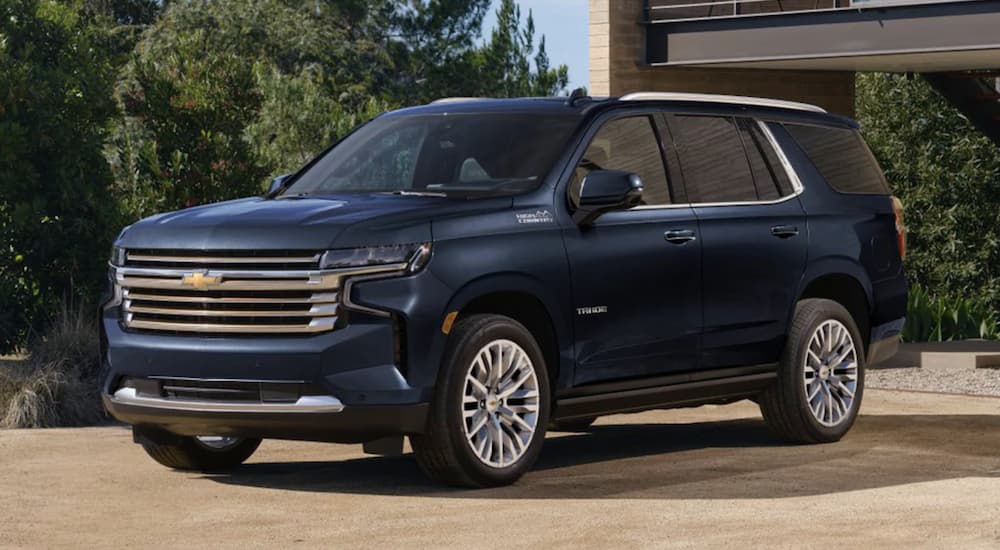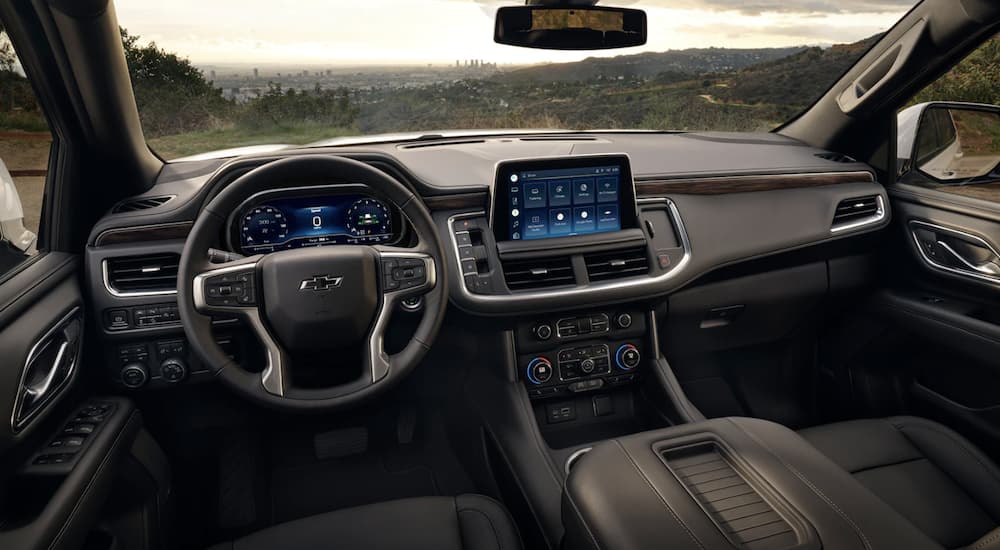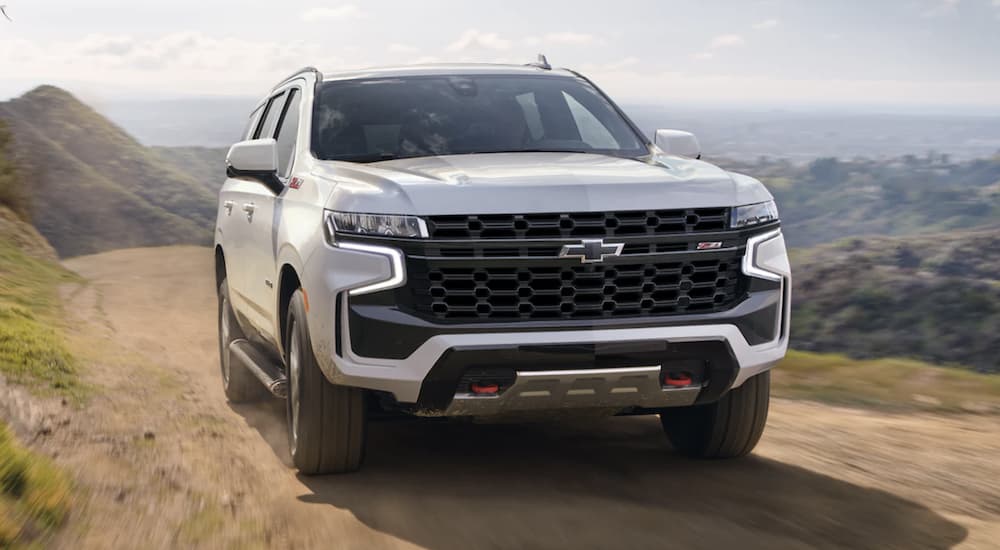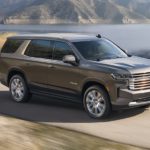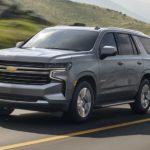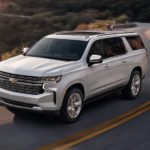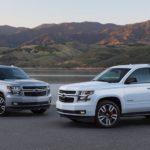While the 2023 Chevy Tahoe sees a few modest design changes over the 2022 model, namely three new exterior color options and a new available grille, the real highlight is the arrival of Super Cruise, Chevy’s advanced driver assistance systems (ADAS). The technology has been around for a few years but is finally trickling down to some of the more popular GM models after its debut on the luxury market. The addition of Super Cruise to the full-size SUVs marks an exciting new era for Chevy Tahoe and Suburban owners, who will finally get the chance to experience one of the industry’s leading ADAS.
In fact, Super Cruise has consistently been named as the single best ADAS currently offered, beating out the likes of Tesla’s AutoPilot and Ford’s Co-Pilot360. Critics have lauded the system’s ability to monitor driver engagement and indicate when it’s safe to use: two important factors for any ADAS. With the announcement that the Super Cruise system will soon arrive on the 2023 Chevy Tahoe and its big brother, the Chevy Suburban, we thought it would be the perfect time to delve into some of the hype surrounding the ADAS. We’ll also take a closer look at the advanced in-vehicle technology it’s built on to see how GM is taking the lead in improving every ride’s safety, security, and convenience.
Super Cruise Arrives
Previously limited to the Bolt EUV and Silverado pickup, the Super Cruise semi-autonomous driver assistance feature brings true Level 2 automation to the 2023 Tahoe’s Premier and High Country trims. Super Cruise allows drivers to go hands-free using a network of cameras, LiDar mapping radar sensors, and GPS data that carefully navigates the road, steering, and braking during highway driving. The system can be used on over 200,000 miles of road across the US and Canada, and that number is increasing. This system has been put through its paces over the last few years, with drivers traveling over 10 million miles using Super Cruise, and GM is far from done.
The automaker has added a couple of key features in recent years, including automatic lane changes with signaling, an enhanced navigation that displays Super Cruise-compatible roads, and a new hands-free trailing function that goes a long way in taking some of the stress out of towing boats, campers, and other large items. Combine this with Chevy’s long list of available enhanced safety features like automatic lane-centering, adaptive cruise control, and automatic emergency braking, and you’ve got a next-generation vehicle that provides an intriguing look into the future of automated driving.
Vehicle automation is typically broken down into 5 distinct levels, though no automakers currently offer anything above Level 2. While Audi experimented with Level 3 automation in 2019, the German automaker canceled the feature citing a lack of clear government regulation. Level 2 automation is defined as a vehicle that has “combined automated functions, like acceleration and steering, but the driver must remain engaged with the driving task and monitor the environment at all times,” according to a press release by GM.
Chevy’s parent company GM first debuted Super Cruise in the luxury market in 2018 when it brought automation technology to the Cadillac lineup. It’s steadily made its way into a variety of GM models in the last few years, with the GMC Sierra and Hummer EV adding the feature in 2022. “The additional Super Cruise-enabled vehicles and new features are an important step toward our goal of enabling hands-free driving 95% of the time and getting people more comfortable with letting go of the wheel,” said Mario Maiorana, Super Cruise chief engineer.
The VIP Treatment
The sort of on-the-go data processing that Super Cruise is built on isn’t as easy as it looks. The Super Cruise system requires a significant amount of bandwidth to operate, presenting a real challenge for GM engineers. In order for today’s vehicles to keep up with the demands of an increasingly connected, digital world, they essentially need to be rolling supercomputers, a challenge that GM has addressed with the introduction of its Vehicle Intelligence Platform (VIP). This connected electrical vehicle architecture gives GM vehicles all the processing power they need to meet the demands of ADAS, infotainment and connectivity features, and over-the-air software updates. The VIP platform offers up to 4.5 terabytes of processing power per hour and Ethernet connection speeds of 100 megabytes-per-second, 1 gigabyte-per-second (Gbps), and 10 Gbps, allowing enabled vehicles to crunch all the data they need to keep a system like Super Cruise, and future iterations of the ADAS technology, humming along without incident.
These wireless, over-the-air updates have become increasingly common as of late, giving automakers the ability to tweak a vehicle from afar without requiring drivers to schedule a service appointment. Such technology is particularly relevant to GM’s growing fleet of electric vehicles, where it can be used to modify the vehicle’s battery management system, motor setting, and a variety of additional settings. The possibilities are almost endless, so it’s good to see GM thinking ahead and integrating technology like VIP into its lineup so early on.
The VIP system also goes a long way in improving cybersecurity, protecting drivers from data hacking and other cyberattacks that represent a real threat in this new era of connected vehicles. This continues a longstanding trend for GM, which, along with chairing the industry’s Automotive Information Sharing & Analysis Center, was among the first automakers to truly prioritize cybersecurity in their vehicles with the introduction of its global Product Cybersecurity organization. This team of cybersecurity experts is just one part of a multi-pronged approach that also includes a “bug bounty” program that rewards tech-savvy users for identifying potential vulnerabilities in the VIP system.
VIP debuted back in 2019, and it’s already been employed on a number of GM vehicles, including the Chevy Corvette, Tahoe, and Suburban, as well as the GMC Yukon, Yukon XL, and a number of Cadillac models. After recording some positive early results, GM has announced plans to bring VIP to 29 additional vehicles by 2023, allowing a wide new array of drivers to enjoy the advanced processing technology. The VIP system will become increasingly important as GM vehicles continue to incorporate new cutting-edge tech into some of its most popular models, enabling these data-hungry systems to operate simultaneously to build the truly hands-free vehicle of the future. “The critical role of software and its importance to our vehicles, both now and for years to come, cannot be overstated,” said GM President Mark Reuss in 2019. “Our new digital vehicle platform and its eventual successors will underpin all our future innovations across a wide range of technological advancements, including EVs and expanded automated driving.”
A Glimpse Into the Future of Automated Driving
GM is far from done tweaking its ADAS; there’s even a new upgraded version dubbed Ultra Cruise in the works as we speak, but for the time being, Super Cruise still represents one of the best deployments of the technology on today’s market. With a full suite of automated driver assistance and safety features, Super Cruise is finally giving drivers a look into the hands-free driving technology that has long been the stuff of science fiction. This is made possible through systems like VIP, which bring the same level of high-speed processing tech found in our consumer electronics to bear behind the wheel. It’s nice to see GM’s ADAS finally pop up outside the luxury market, allowing more drivers to enjoy the Super Cruise experience. It’s sure to make all the difference on Chevy’s full-size SUVs, where its ability to simplify towing tasks will be especially handy. It’s amazing to see what Chevy has already accomplished while staying within the confines of Level 2 automation technology, and it gives us a lot of hope for the future of true hands-free driving.
